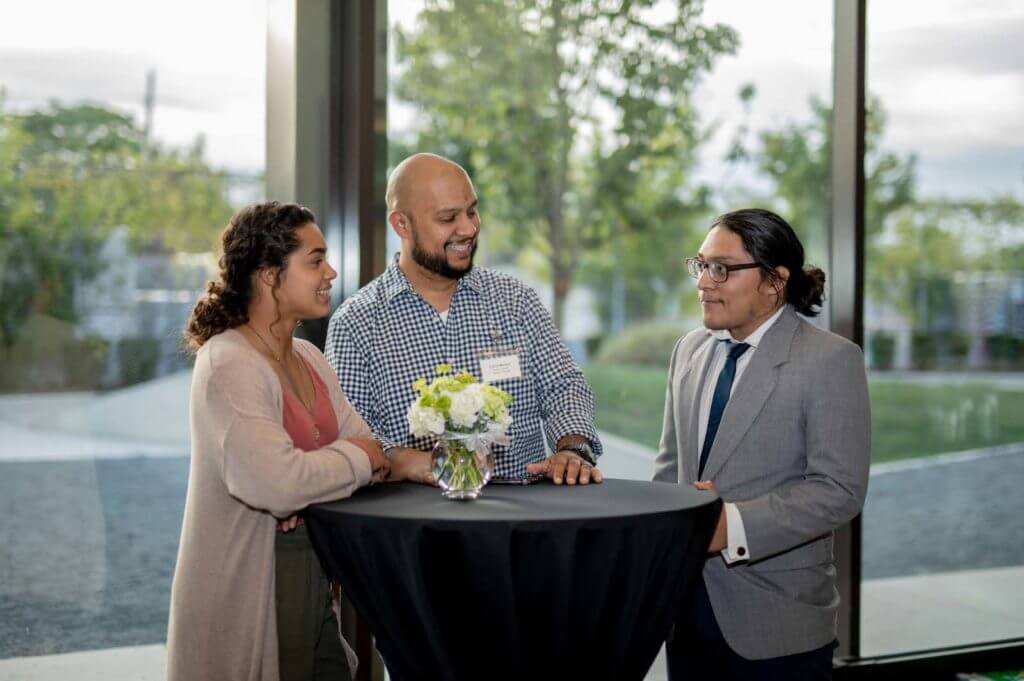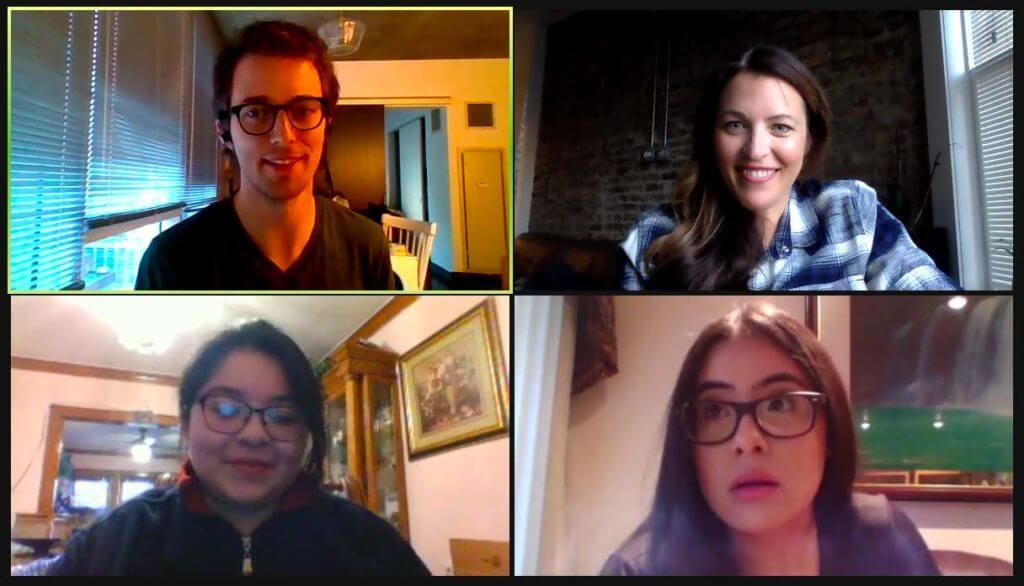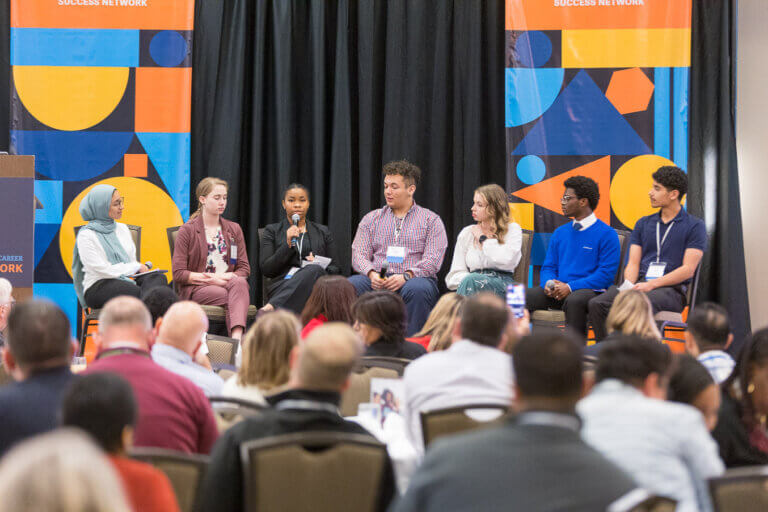Hello, my name is Edith Lizardo and I am a senior in Intrinsic Schools in Belmont Cragin and intern at Education Systems Center through a program called Urban Alliance. You may be wondering why an 18-year-old is writing about networking events. I’ve been a student at Intrinsic for six years and, through my journey, I have repeatedly heard how important networking is for every young adult. At first, like any young adolescent, I didn’t understand how and why I should talk to new people. But then I got my first job when I was 14 years old. My cousin referred me to Culvers, where I automatically was hired. It turns out, that is called networking! I didn’t realize it until after I was hired and saw that other people who were applying needed to have an interview and fill out a lot of paperwork. I wondered why their process was so different from mine until it hit me: my cousin. I can 100% guarantee that if my cousin hadn’t referred me, I wouldn’t have gotten the job. I was inexperienced and just 14 years old.
Once I got the job, I started making connections with my general manager, which has led to me receiving an almost $3,000 scholarship. That award is allowing me to go to college without paying anything for the next two years, which only goes to show how important and valuable networking can be. Networking is not only about what we can gain but also what we learn. It’s critical for young people to learn how to build long-lasting friendships and connections with a broad variety of people. Just simply saying “hi my name is” to a stranger in a meeting can make a difference; that person could be a CEO, a future boss, a friend who gives a discount in the store, or a person who offers knowledge.
While I learned a lot about networking by watching my family, I am fortunate enough to attend a high school that also teaches us how to network and then lets students practice at an annual event called Networking Night. I have experienced Networking Night both in-person and then, this last year because of COVID-19, as a virtual event. As a student, there are pros and cons to the two styles of events. I’ll share my perspective, which I hope teachers can use when considering how to plan for future events.

In-Person Networking Events
I loved our in-person Networking Night. I was a junior in high school when I was able to take part in Networking Night for the first time. My school invited more than 50 professionals to mingle and network with us. In advance, our teacher prepared us on all aspects of networking, for example, how to properly shake a hand. Then, during the event, students were able to walk around and hear from the professionals about their own experiences. Talking to people from different backgrounds helped students spark new interests and learn about career paths, including jobs we didn’t know existed. It was also a chance for us to practice dressing the part and showing our personalities.
In my personal opinion, it was a great experience. Having to approach a professional and make conversation made me go out of my comfort zone and build new social skills. However, the cons about networking in person are that it is time-consuming—from decorating to making sure everyone is organized to enter the event—and requires finding a big group of professionals who can meet in the same place at the same place. Overall, this event is great for young people to establish skills and for their development as young professionals.
| In-Person Pros | In-Person Cons |
|---|---|
| One-on-one connections with the professionals | Professionals who don’t live in the area couldn’t attend |
| Dressing up professionally | Time-consuming |
| Exchanging business cards | |
| More flexible to walk around |

Virtual Networking Events
Our remote Networking Night, which I attended my senior year, was a very unique opportunity and a better experience than I would have thought. Our teacher shared some sample questions, then assigned us to prepare more thoughtful, personalized questions the day before. The day of the event, we were given a page full of Zoom links which were divided into careers. Students were able to go in and out of the Zoom meetings based on their interests. We were advised that our names should always be present and we would enter a meeting with cameras on but our mics mute to show respect. Great way to just feel comfortable and have a great conversation. As well it took the intimidation and feeling of shyness from students because it was not a professional and them but a professional and a group of people. It allowed more of a community discussion and students were able to use different methods of communication like the chatbox or emojis or just being able to come out of mute.
Like every event, it had its good and bad, which for me was WiFi problems. I have six brothers and poor WiFi, which does not go hand-in-hand with long meetings. But one con that I think is key is how hard it is to leave a long-lasting image with the professional, as getting one-on-one time with the professionals was extremely limited. On the other hand, it still helped me learn and practice my communication skills.
| Virtual Pros | Virtual Cons |
|---|---|
| More efficient for professionals to attend | WiFi problems |
| Able to connect with professionals faster after the event | Not enough one-on-one time with professionals |
| More effort was given on asking the professionals thoughtful questions | Hard to leave a lasting image |
In Conclusion: Keep Networking
As I prepare for graduation, I feel that it is my obligation as a Latinx woman to spread my networking knowledge to people of color and even people from different class ranks. While I learned networking from my parents and school, I recognized that not everyone has that luxury. As someone who realizes just what networking can do for a person, I believe everyone should have the opportunity to learn and practice their networking skills, the sooner the better. I hope this inspires more teachers to consider how they can design networking events — whether virtual or in-person — to ensure every high school student can participate.


